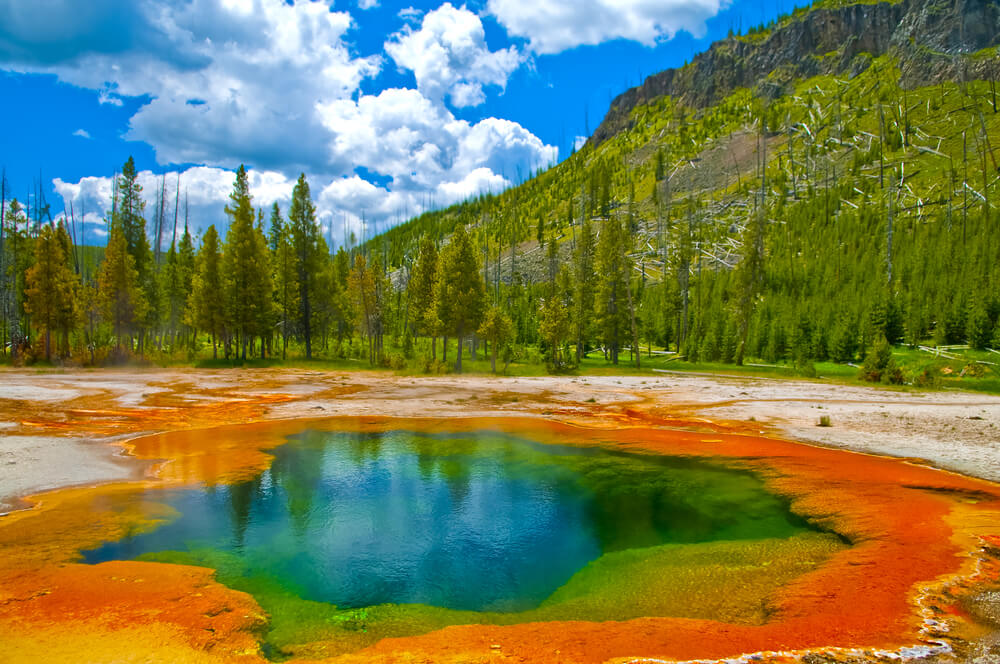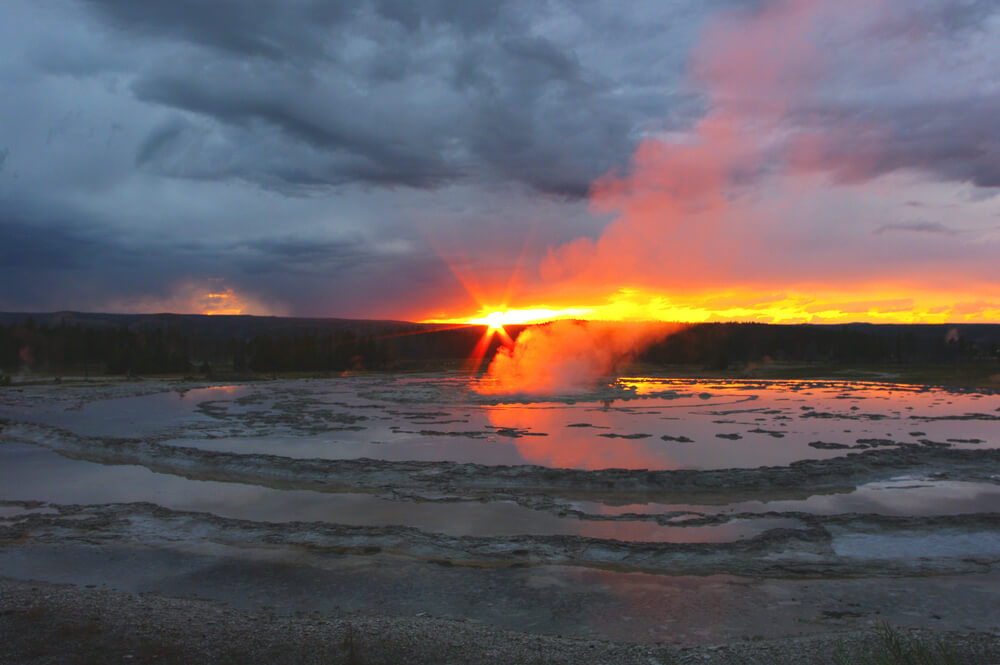NASA will cool the Yellowstone supervolcano and use it for energy: how safe is it
NASA has a $ 3,46 billion plan to cool Yellowstone Volcano and use it for energy. Interesting Engineering.

Photo: Shutterstock
Beneath the picturesque hot springs and geysers of Yellowstone National Park lies a giant magma chamber that could one day erupt as a supervolcano.
According to NASA, a supervolcano is one of the greatest natural threats to human civilization, and is significantly more dangerous than the threat of asteroids.
This is why the US space agency has developed an ambitious plan to ensure that the volcano remains dormant, according to a 2017 BBC report.
As a bonus, NASA's method will also provide electricity to the surrounding region, although the project will cost a staggering $ 3,46 billion.
Drilling holes in the rock of the volcano
Both an asteroid collision that ended civilization and an eruption in a chamber called the Yellowstone Caldera are very unlikely in our lifetime.
The likelihood of a 5-10 km wide asteroid hitting Earth, such as the one that destroyed the dinosaurs, is almost negligible at 0,000001%, while the Yellowstone eruption is not predicted in the next 10 years.
However, in 2017, Brian Wilcox, who was a member of the NASA Planetary Defense Advisory Board that conducted research on the threat of asteroids and comets, said that he concluded in this study that the threat of a supervolcano is substantially greater than that of an asteroid or comets.
There are about 20 supervolcanoes on Earth, and large eruptions occur on average once every 100 years. The prolonged volcanic winter resulting from a supervolcano eruption could prevent humanity from having enough food for the world's population, leading to widespread famine.
On the subject: Where are the most dangerous supervolcanoes located and what will happen if they wake up
In an interview with the BBC, Wilcox explained NASA's plans to prevent this.
The US space agency itself admits the plan carries risks, although the rewards will outweigh the risks if they prevent a catastrophic event that could wipe out humanity by drilling holes into the undersides of a volcano outside Yellowstone National Park.
Then the organizers of the project want to pump cold water under high pressure into the supervolcano, and then pump the water out of it. The incoming water will cool the volcano, while the outgoing water will reach a temperature of about 350 ° C and can be used to generate electricity.
Supervolcanoes can provide energy to adjacent areas for "tens of thousands of years"

Photo: Shutterstock
At the moment, the plan is only theoretical, and there is no data on the risks of drilling the volcano, Wilcox said.
Nonetheless, he believes the $ 3,46 billion experiment could be funded by geothermal companies that will recoup their investment and "get electricity that could power the surrounding area for potentially tens of thousands of years."
On top of that, "the long-term benefit is that you will prevent a future supervolcano eruption that will destroy humanity," Wilcox told the BBC in 2017.
“Yellowstone currently produces about 6 gigawatts of heat,” Wilcox said. “By drilling in this way, it could be possible to create a geothermal power plant that generates electricity at extremely competitive prices of around $0,10 per kWh.”
You may be interested in: top New York news, stories of our immigrants, and helpful tips about life in the Big Apple - read it all on ForumDaily New York.
In addition to seeking to find a way to reduce the threat of supervolcanoes like Yellowstone, NASA also hopes that its outlined approach will encourage others in the scientific community to tackle the problem.
Ironically, these massive, potentially destructive magma chambers have the potential to provide energy and mitigate the effects of climate change, a greater threat to human existence.
Read also on ForumDaily:
Twisted research and lies: how an approved and publicized drug crippled thousands of children
Voluntary unemployment: Americans are quitting jobs at a record pace
Ten underrated US parks you will love to visit
Do you want more important and interesting news about life in the USA and immigration to America? — support us donate! Also subscribe to our page Facebook. Select the “Priority in display” option and read us first. Also, don't forget to subscribe to our РєР ° РЅР ° Р »РІ Telegram and Instagram- there is a lot of interesting things there. And join thousands of readers ForumDaily New York — there you will find a lot of interesting and positive information about life in the metropolis.











